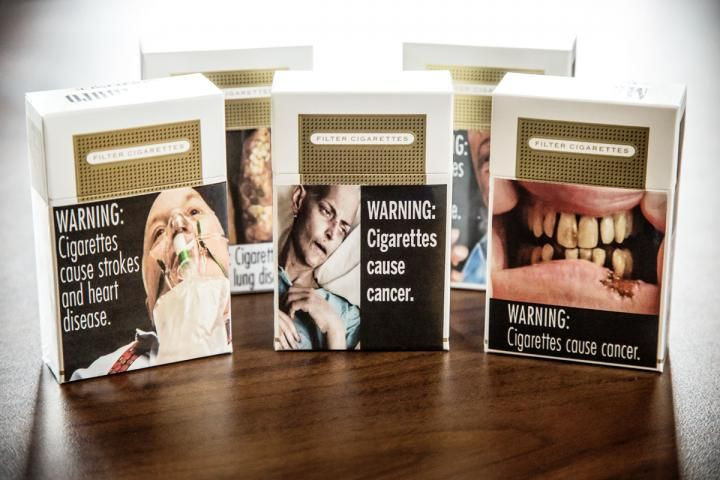Warning Labels With Graphic Images Don’t Deter Smokers, May Encourage Reactionary Smoking

A large body of research has shown that cigarettes are carcinogenic, and that smoking can lead to lung, mouth, and throat cancer.
That knowledge alone, however, often isn’t enough to deter habitual cigarette smokers, who are hooked by their addiction to nicotine. In an attempt to deter them, policies putting graphic warning labels on cigarette packages have been approved in many countries around the world. These images of disease and suffering should, in theory, prompt smokers to kick their habit, but a new study out of the University of Illinois at Urbana-Champagne suggests “the good intentions of this tobacco control measure may be for naught.”
According to the researchers, the graphic labels are perceived by many as a threat to their choices, freedom, or autonomy.
“What we found is that most people don’t like these warning labels, whether they are smokers or nonsmokers,” said communications doctoral student Nicole LaVoie, lead researcher of the study, in a statement. “It makes them angry, it makes them express negative thoughts about the packaging, that they’re being manipulated. Ultimately, it also makes them think that the source — the government in this case, mandating these labels — is overly domineering, is being too much in their business.”
The biggest problem is that the strongest response of this kind came from participants who measured high in psychological reactance; a trait that makes someone more prone to negative and resistant thoughts when they believe they’re being told what to do. Smokers, unfortunately, tend to be somewhat higher in this trait. Professor Brian Quick, a co-author of the paper, said that because of this, a boomerang effect can occur.
“If these individuals see things as freedom threats, they are going to be more attracted to perform the threatened behavior," he said.
LaVoie adds that graphic warning labels may actually be doing harm to the group that needs help if they’re high in psychological reactance and battling an addiction to smoking.
The study included 435 undergraduate students, 17.5 percent of whom were smokers, and 82.5 percent who identified as nonsmokers (no smoking within the previous month). All of the participants were given a package of cigarettes from the same popular brand, along with a questionnaire meant to measure personality traits along with their reaction to the package. Half of the smoking participants and half of the nonsmoking participants were given packages with graphic warning labels, and the other half were given packages with a text-only label — the one now in use in the U.S.
The images had all been approved by the Food and Drug Administration for use on graphic warning labels in the U.S. when, and if, they go into effect (the change was once scheduled to happen in 2012, but has since been tied up in the courts). The images included a diseased mouth, lungs, a person afflicted with heart disease, a person dying of lung cancer, and a corpse.
Though many other countries have conducted studies which concluded smoking decreases after the implementation of graphic warning labels, LaVoie said that the new labels often coincided with other measures of tobacco control like smoking bans and tax increases. She added that some smokers even buy and use slip covers so they can cover the package and continue smoking without seeing the images.
“We always measure and look at the intended effects, like encouraging people to quit smoking, but sometimes we don’t remember to look at what else these messages are doing that we’re not thinking about, like causing reactance,” LaVoie said. “Our goal is to think about wat we can do, what messages we can construct, that are effective for the whole, but also target these groups that are the most in need of help.”
Source: LaVoie N, Quick B, Riles J, Lambert N. Are Graphic Warning Labels an Effective Message Strategy? A Test of Psychological Reactance Theory and Source Appraisal. Communication Research. 2016.



























